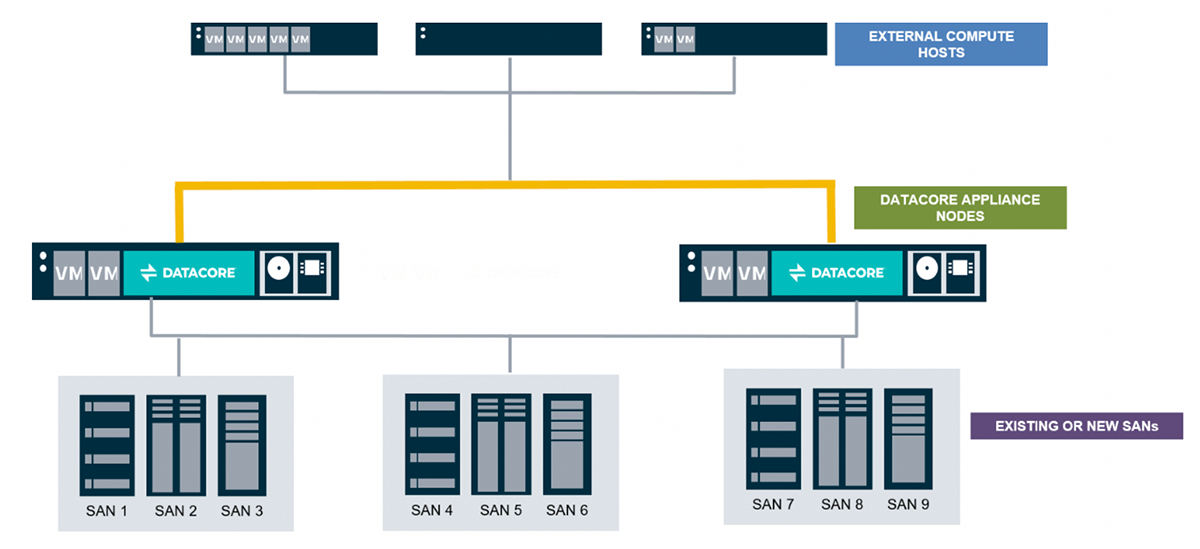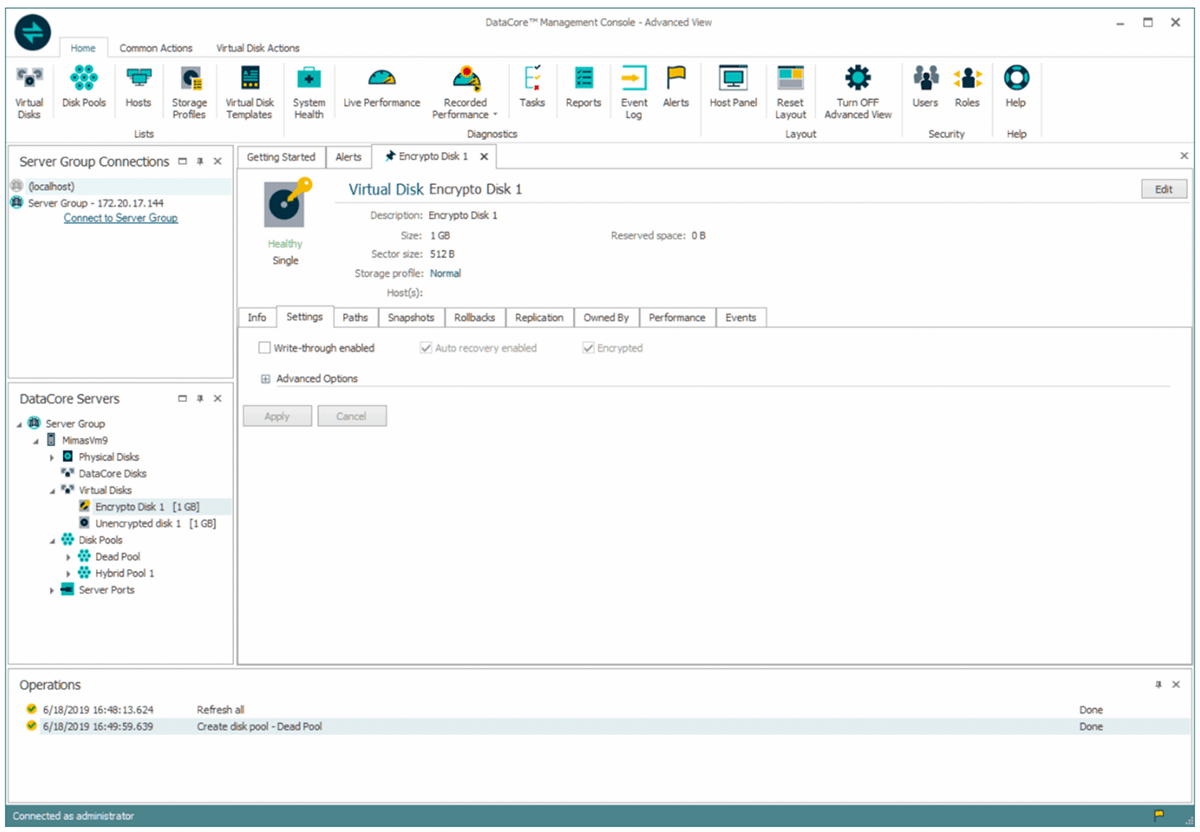Hyperconverged infrastructure (HCI) continues to gain traction in the enterprise IT market, with rapid adoption amongst diverse customers looking to simplify IT operations, reduce complexity, and enable a modular building block approach to data center modernization. But how different HCI offerings stand apart from one another is often determined by how vendors approach storage and data services.
DataCore HCI-Flex is a hyperconverged infrastructure appliance purpose-built to ease IT burdens by combining compute, storage, and virtualization in one easy-to-use box. It delivers all the simplicity, scalability, high performance, and rapid deployment of HCI, along with the powerful data services and ultimate flexibility of our software-defined storage platform.
The appliance is available in small, medium and large configurations. The small and medium options are bundled in a 1U x86 Dell® PowerEdge® R640XL server, whereas the large appliance is based on the 2U Dell PowerEdge R740XL server. They come with varying Intel® Xeon® Gold & Silver CPUs; Dual Ranked RDIMMs @ 2666MT/s RAM sizes and drive options (SAS only). All three flavors are available in hybrid configurations (SSDs and HDDs for two storage tiers) and All-Flash with SSD drives. Additionally, while a good portion of the market utilizes Ethernet or iSCSI storage networking protocols, the large appliance does provide the option of Fibre Channel. Software packages include DataCore SANsymphony (EN license) and a choice of VMware ESXi or Microsoft Hyper-V Hypervisors. For more information, download the datasheet.

DataCore 1U Appliance shown above
Going above and beyond conventional HCI
HCI-Flex delivers all the core benefits of hyperconverged infrastructure. First, it provides a single vendor for hardware and software sales and technical support. Second, it significantly simplifies deployment and implementation with a turnkey, out-of-the-box experience for sizing, installation and configuration. Simple and predictable pricing for your workloads, and the ability to independently scale performance and capacity, means no more guessing how much compute and storage you need. Simply buy what you need, when you need it, starting with only two nodes and scaling up or out in a pay-as-you-grow model.
However, there are two key benefits HCI-Flex offers that most HCI solutions do not provide.
- High availability with just two nodes: Most hyperconverged infrastructure vendors require you start off with a minimum three-node configuration for high availability, and that number only goes up if you use higher replication numbers. With DataCore HCI-Flex, you only need two nodes to achieve a true high availability configuration that will protect your data.
- Seamlessly leverage existing storage resources: One of the biggest blockers for IT organizations purchasing HCI appliances is the fact that they have sunk hundreds of thousands or maybe millions into a storage area network (SAN); most HCI appliances available in the market today do not support utilizing these SANs. The DataCore HCI-Flex appliance does.
So, when considering hyperconverged infrastructure, you need to ask yourself: can I achieve high availability and rock-solid data protection with just two nodes? And, can I connect the appliance to my existing, or new, external devices, like SANs? Convincing your CIO or CFO to abandon a costly purchase is not a conversation I would personally like to have and I’m sure the feeling’s mutual with you.. In this regard, DataCore HCI really is hybrid-converged infrastructure, if you will, which is the synergy of hyperconverged infrastructure and software-defined storage. Read more about my take on hybrid-converged infrastructure and HCI 2.0 here.

Rapid Deployment Wizardry
Now, let’s talk deployment. Once you receive the appliances (we recommend two nodes for an HA configuration), you rack and stack them per your datacenter policies. Once power and network cabling has been completed, you fire up the appliances, answer three easy questions specific to your environment and you’re off to the races as the built-in Appliance Wizard does the rest in approximately 1 hour! Moreover, if you remember your classical literature, you’ll know that wizards are neither late nor early or something like that.

DataCore UI showcasing encryption
Next-Generation Security
The HCI-Flex solution also supports AES-XTS 256-bit encryption using the latest Cryptographic API: Next Generation developed by Microsoft®. Encryption is done at the pool level, which means the application hosts do not see a difference and continue to operate as usual. This level of encryption ensures you are meeting regulatory or other compliance requirements while safeguarding against the physical theft of your drives and data.
To conclude, DataCore’s HCI-Flex is more than just another appliance in the crowded HCI market—it is a hybrid-converged solution that satisfies your HCI needs without having to sacrifice your existing storage arrays, giving you the ultimate flexibility, simplicity and choice in how you build, manage, and modernize your storage infrastructure.
To learn more about DataCore’s HCI Flex appliance, download the data sheet or visit the product overview.